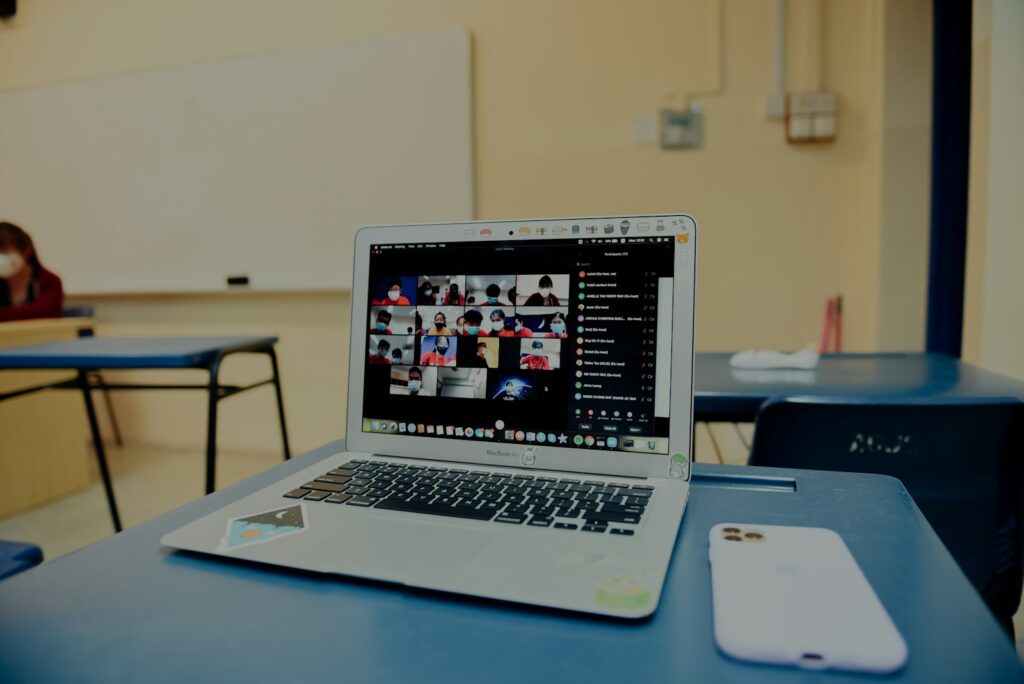Barriers to Integrating Interactive Learning Tools in Schools
Many schools struggle to bring interactive learning tools into daily teaching due to cost, access, and training gaps. Addressing these barriers is key to unlocking modern, engaging classrooms for every student.
Deploying interactive learning technologies into classrooms throughout New England is difficult but increasingly essential as they’ve been proven to increase classroom engagement and improve student performance. Access to technology, a lack of support for educators, and an infrastructure that does not support new ways of teaching are the most significant barriers. It is at least important in implementing these things to understand if and how educational institutions can prepare students for a technology-based world. Most schools lack the funds to procure costly hardware and software. Furthermore, teacher competence is frequently an issue, resulting in the underutilization of new technologies. Overcoming these barriers requires a collaborative effort among educators, administrators, and technology vendors to formulate an integrated approach for successful implementation. Schools also need to account for the varying degrees of digital literacy among students. This gap can affect the performance of such interactive tools, so these must be customized to address different learning needs. As schools continue to focus on addressing these challenges, they can make significant strides in developing dynamic, interactive learning environments that fully leverage the capabilities of interactive software.
Main Challenges for Introducing Interactive Learning Tools
Common Obstacles for Educational Institutions
Several obstacles may prevent learning tools from being successful in practice or at scale. The questions about these schools also have to do with the lack of computers in school infrastructures, the poor computer skills of both students and teachers, and financing and equitable access.
Funding and Resource Constraints
Funds are also a significant obstacle for active learning tools. Schools are often financially strained and cannot afford the necessary software and hardware. Schools commonly are forced to seek outside professional development resources. These tools must be taught to teachers to be effectively employed. In the absence of sufficient resources for these programs, the adoption may be uneven or weak. A lack of investment in technology means that spending is a priority in many educational institutions, but technology is not seen as a priority. This, in turn, inhibits them from being able to offer students contemporary learning experiences that engage them better and help them understand.
Digital Divide and Equitable Access
The digital divide is a significant obstacle to deploying interactive learning tools. Many students lack access to technology at home. Schools that embrace new technology can also widen the access gap between students. The absence of accessible internet and devices could hinder the ability to engage in interactive learning efforts. Equitable access is crucial to ensure that all students can utilize these educational tools. Schools need to develop a plan to provide the technology and support every student requires to succeed in learning.
Technical Issues in School Environments
There are often technical glitches when these interactive learning tools are brought to schools. Problems with infrastructure may be related to low bandwidth, obsolete equipment, and a lack of technical assistance. Many schools in New England struggle to maintain network uptime. Common service interruptions can disrupt lessons and prevent students from accessing online resources effectively. Ongoing maintenance is required to keep systems running well. These issues can be further compounded by a dearth of IT personnel and a shortage of school maintenance staff, resulting in technical problems not being addressed promptly.
Overcoming Infrastructure and Accessibility Problems
Infrastructure and access concerns must be satisfactorily addressed for interactive learning tools to be effectively implemented in schools in New England. Achieving instructional continuity in the digital age presents inevitable challenges related to reliable network connectivity, device access, cloud technology, and ensuring accessibility for all.
Source Connectivity Problems in New England
Network connectivity is a significant issue for many schools in New England. Rural areas often suffer from weaker infrastructure when it comes to internet provision, which in turn affects digital learning opportunities. Uninterrupted and resilient connectivity is a necessity for cloud-based tools to thrive in an asynchronous learning environment. To solve connectivity challenges, they can partner with local ISPs to bridge access gaps. Setting up Wi-Fi hotspots in underserved communities helps students learn online. Furthermore, schools need to prioritize infrastructure investment and invest in infrastructure to meet the growing demand for modern bandwidth.
Device Availability and Compatibility
Access to devices significantly impacts a student’s learning experience. Schools need to provide students with access to devices, such as tablets, laptops, or desktops. This is particularly important in cases of interactive educational software for which specific system prerequisites are needed. Schools could adopt a bring-your-own-device (BYOD) approach, allowing students to use their own devices. This method reduces cost and improves availability. In addition, schools will need to consider device bulk-purchase programs, which ensure they remain compliant as new software platforms are introduced.
Cloud-Based Tools and Offline Accessibility
Online tools can have many features that are useful for independent learning, but can also create obstacles for accessibility. Reliance on a reliable internet connection is paramount, which is an issue in rural areas. To make this work, schools must ensure that any cloud-based educational software has a robust offline capability. This enables students to learn even when they are at home or in areas with poor connectivity. Creating a blended learning model that incorporates both digital and non-digital materials can also enhance access to education for all students. Schools can lay a more inclusive groundwork for the benefits of digital learning tools by addressing these areas.
Protecting Student Data While Using Educational Software
Our schools are embracing more interactive learning tools, making the need to secure privacy and cyber protection even more imperative. That covers everything from safeguarding student data and addressing new cyber threats to meeting compliance requirements.
Protecting Student Data
Safeguarding sensitive student data must be a top priority. An LMS needs to encrypt data effectively to ensure end-to-end security, both at rest and in transit. This reduces the potential for unauthorized entry. Routine security reviews can be used to discover weaknesses in software. Enforcing access controls ensures that only authorized individuals can view sensitive information. Educating employees on best practices for protecting data encourages a culture of security awareness. Key measures include encrypting data to secure it during transport, implementing access controls to restrict data to authorized personnel, and conducting periodic audits to evaluate and improve security controls.
Cyber Threats in Digital Classrooms
Cyber threats are constantly evolving and becoming increasingly sophisticated every day. Schools are vulnerable to hacks and data breaches, with ransomware attacks, phishing schemes, and malware infections all potentially exposing personal student data. Schools must remain vigilant and take proactive measures to strengthen their cyber defenses. Network activity must be constantly monitored to enable early detection of suspicious activity or breaches. Schools can enhance their defenses against such threats by implementing firewalls and intrusion detection systems. Common cyber threats include ransomware, phishing, and malware.
Compliance with Regulations
Educational institutions need to comply with data privacy regulations. Laws such as the Family Educational Rights and Privacy Act (FERPA) and the Children’s Online Privacy Protection Act (COPPA) establish rules for the collection and use of student data. Schools must verify that their educational software meets these standards. This involves obtaining parental consent for the collection of data and explaining how the data will be used. Staff require regular training to stay informed and compliant. Regulatory focus areas include FERPA, COPPA, and additional state law requirements.
Promoting Teachers’ Training and Acceptance
The integration of interactive learning aids in schools is effective only if educators are adequately prepared. Successful implementation involves addressing professional development, resistance to change, and digital literacy.
Professional Development Requirements
Teachers cannot effectively use interactive tools without strong professional development. Training programs should be hands-on and enable teachers to work with applications in a safe environment. Workshops and seminars can be offered for specific technologies, with hands-on experiences for classroom use. Continuous support should be provided alongside these efforts to ensure that teachers feel comfortable using the tools. Comprehensive training, accompanied by sufficient resources such as time and money, should be made available. When teachers receive customized tech training, their capabilities and enthusiasm for embracing these technologies increase significantly.
Overcoming Resistance to Change
Resistance to change is a frequent hurdle in adopting new educational resources. Some teachers are risk-averse and see no reason to adopt new products. To address this, school leaders must articulate the benefits. Evidence of increased student engagement and better educational results can help change attitudes. Teachers who are part of the decision-making process feel more responsible. Developing a safe community where teachers feel comfortable discussing worries and experiences helps lower anxiety about new technologies.
Improving Digital Literacy Among Educators
Educators’ digital literacy must be improved. Proper knowledge of computer tools can enhance teachers’ ability to effectively integrate them into their teaching. Training can range from basic software operation to advanced teaching methods that incorporate interactive functionality. Online courses and peer mentorship can provide flexible opportunities for learning. Periodic scans of digital literacy can help identify areas for improvement. This proactive approach means that teachers are constantly learning and evolving in response to new technology.
Increasing Student Engagement and Managing Digital Classrooms
Bringing in interactivity outside of traditional computer labs is a great way to increase student interest, but it requires careful classroom management.
Maximizing Student Engagement
Teachers can use interactive tools to increase student engagement. These may be apps that support collaboration, such as Google Classroom or Microsoft Teams. These platforms can provide immediate feedback and encourage student discussion. Promoting project-based learning is another solution. Students can engage in projects related to their interests. Building levels, assigning points, and awarding credits can encourage participation and motivate students to engage. Educators can also employ gamification. Surveys and feedback instruments help tailor lessons to student interests.
Effective Classroom Management Strategies
Guidelines are essential for maintaining control and focus in a digital classroom. Creating community agreements related to digital interactions can be helpful. For example, setting appropriate device use times and promoting polite communication are beneficial to the learning atmosphere. Structured schedules are equally important. Providing a quick rundown of daily goals helps orient students. Virtual breakout rooms can facilitate smaller discussions and support participation. Predictive data about students’ progress can alert teachers when intervention is necessary and when to adjust strategies.
Balancing Traditional and Digital Pedagogies
Balancing traditional teaching methods and digital tools is crucial. Teachers should incorporate interactive technologies into regular lessons, rather than using them as a substitute. Hybrid learning designs are ideal. Differentiating days for tactile activities and digital platforms adds diversity. Professional development for teachers and training for students improve comfort and competencies. Balanced social engagement and management lead to high-quality education.



